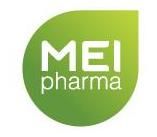预约演示
更新于:2025-05-07
Centro Nacional de Investigaciones Oncologicas CARLOS III
更新于:2025-05-07
概览
关联
1
项与 Centro Nacional de Investigaciones Oncologicas CARLOS III 相关的药物作用机制 mTORC1抑制剂 [+1] |
在研机构 |
原研机构 |
在研适应症 |
最高研发阶段临床1期 |
首次获批国家/地区- |
首次获批日期- |
20
项与 Centro Nacional de Investigaciones Oncologicas CARLOS III 相关的临床试验NCT06611306
BEAT-Breast - Improving Outcomes for Breast Cancer Patients With Brain Metastases: a Pilot Nonrandomised Single Arm Phase 2 Clinical Trial in Patients With Primary Breast Cancer With Brain Metastases Who Are Not Suitable for Stereotactic Radiotherapy
The aim of this study is to demonstrate if it is possible to delivering a novel and modern radiotherapy approach (Dose Escalated internal PTV (DE-iPTV)) and to collect health related quality of life in patients whose breast cancer has spread to the brain (brain metastases) at 8 weeks post enrolling into the study.
The main questions that have been set out to to answer are:
* Is it possible to deliver the novel radiotherapy approach, DE-iPTV?
* Is it possible to measure health -related quality of life?
* What impact does the novel radiotherapy approach have on: patient's quality of life, control of the brain metastasis (control of the lesion) and steroid use?
Participants will:
* Receive 5 doses of radiotherapy
* Complete weekly quality of life (EQ-5D) assessments and medication (steroid) diaries (via telephone/ postal) until 12 weeks post enrolment
* Be reviewed in clinic with up-to-date MRI scans at 8, 12 and 24 weeks post-enrolment
* Complete a more detailed HRQoL panel of assessments will be assessed at baseline, 8 weeks, 12 weeks and 24 weeks post enrolment.
The main questions that have been set out to to answer are:
* Is it possible to deliver the novel radiotherapy approach, DE-iPTV?
* Is it possible to measure health -related quality of life?
* What impact does the novel radiotherapy approach have on: patient's quality of life, control of the brain metastasis (control of the lesion) and steroid use?
Participants will:
* Receive 5 doses of radiotherapy
* Complete weekly quality of life (EQ-5D) assessments and medication (steroid) diaries (via telephone/ postal) until 12 weeks post enrolment
* Be reviewed in clinic with up-to-date MRI scans at 8, 12 and 24 weeks post-enrolment
* Complete a more detailed HRQoL panel of assessments will be assessed at baseline, 8 weeks, 12 weeks and 24 weeks post enrolment.
开始日期2025-01-06 |
申办/合作机构 |
NCT06590506
High Definition Medicine: Establishment of a Cohort of Patients With Advanced Cancer for Prospective High-resolution Follow-up
The present study aims to analyze different genetic, phenotypic, environmental, social and lifestyle characteristics of cancer patients who are going to start a first line of cancer treatment with palliative intent and their possible relationship with tumor response or tolerance to treatment. In this way, the aim is to identify a series of variables that allow a better selection of patients and oncological treatments.
开始日期2023-03-02 |
NCT04346147
Prospective, Phase II, Randomized, Open-label, Parallel Group Study to Evaluate the Efficacy of Baricitinib, Imatinib or Supportive Treatment in Patients With SARS Cov2 Pneumonia
In absence of vaccine and medications specifically designed to treat SARS-CoV-2 disease, identifying treatment options is critical at this time to control the disease outbreak.
For this, we have designed a phase II trial of efficacy and safety with 3 branches of different combinations of treatment to identify which is the best early treatment option for patients with pneumonia due to SARS-CoV-2 (Covid-19) Identifying treatment options as early as possible is critical to the SARS-CoV-2 outbreak response. Currently, there is no approved vaccine for the disease and the treatments being used are not specifically designed for the SARS-CoV-2 virus, but are different groups of drugs used for other pathologies with mechanisms of action that justify their use because they inhibit entry of the virus into virus cells or proteases.
The study aims to compare Imatinib 400mg, Baricitinib 4mg or supportive treatment, administered for 7 days in the setting of SARS-CoV-2 pneumonia treatment.
Patients who meet inclusion criteria and do not have any exclusion criteria will be randomized to receive open treatment 1:1:1
For this, we have designed a phase II trial of efficacy and safety with 3 branches of different combinations of treatment to identify which is the best early treatment option for patients with pneumonia due to SARS-CoV-2 (Covid-19) Identifying treatment options as early as possible is critical to the SARS-CoV-2 outbreak response. Currently, there is no approved vaccine for the disease and the treatments being used are not specifically designed for the SARS-CoV-2 virus, but are different groups of drugs used for other pathologies with mechanisms of action that justify their use because they inhibit entry of the virus into virus cells or proteases.
The study aims to compare Imatinib 400mg, Baricitinib 4mg or supportive treatment, administered for 7 days in the setting of SARS-CoV-2 pneumonia treatment.
Patients who meet inclusion criteria and do not have any exclusion criteria will be randomized to receive open treatment 1:1:1
开始日期2020-05-07 |
申办/合作机构 |
100 项与 Centro Nacional de Investigaciones Oncologicas CARLOS III 相关的临床结果
登录后查看更多信息
0 项与 Centro Nacional de Investigaciones Oncologicas CARLOS III 相关的专利(医药)
登录后查看更多信息
9
项与 Centro Nacional de Investigaciones Oncologicas CARLOS III 相关的文献(医药)2023-01-01·Frontiers in bioengineering and biotechnology
Isolation of goat milk small extracellular vesicles by novel combined bio-physical methodology.
Article
作者: Desco, Manuel ; Aguilera-Jiménez, Elena ; Cortes-Canteli, Marta ; Salinas, Beatriz ; Gallardo, Begoña ; Peinado, Héctor ; González, María Isabel ; Cerón, Carlos
2021-10-01·Seminars in Immunology2区 · 医学
Dimensions of neutrophil life and fate
2区 · 医学
Review
作者: Hidalgo, Andrés ; Casanova-Acebes, María
2001-10-01·British Journal of Dermatology1区 · 医学
beta-catenin expression in pilomatrixomas. Relationship with beta-catenin gene mutations and comparison with beta-catenin expression in normal hair follicles
1区 · 医学
Article
作者: Palacios, J. ; Contreras, F. ; Moreno-Bueno, G. ; Gamallo, C. ; Perez-Gallego, L.
100 项与 Centro Nacional de Investigaciones Oncologicas CARLOS III 相关的药物交易
登录后查看更多信息
100 项与 Centro Nacional de Investigaciones Oncologicas CARLOS III 相关的转化医学
登录后查看更多信息
组织架构
使用我们的机构树数据加速您的研究。
登录
或

管线布局
2025年07月16日管线快照
管线布局中药物为当前组织机构及其子机构作为药物机构进行统计,早期临床1期并入临床1期,临床1/2期并入临床2期,临床2/3期并入临床3期
其他
1
登录后查看更多信息
当前项目
| 药物(靶点) | 适应症 | 全球最高研发状态 |
|---|---|---|
ME-344 ( mTORC1 x mTORC2 ) | 早期乳腺癌 更多 | 无进展 |
登录后查看更多信息
药物交易
使用我们的药物交易数据加速您的研究。
登录
或

转化医学
使用我们的转化医学数据加速您的研究。
登录
或

营收
使用 Synapse 探索超过 36 万个组织的财务状况。
登录
或

科研基金(NIH)
访问超过 200 万项资助和基金信息,以提升您的研究之旅。
登录
或

投资
深入了解从初创企业到成熟企业的最新公司投资动态。
登录
或

融资
发掘融资趋势以验证和推进您的投资机会。
登录
或

Eureka LS:
全新生物医药AI Agent 覆盖科研全链路,让突破性发现快人一步
立即开始免费试用!
智慧芽新药情报库是智慧芽专为生命科学人士构建的基于AI的创新药情报平台,助您全方位提升您的研发与决策效率。
立即开始数据试用!
智慧芽新药库数据也通过智慧芽数据服务平台,以API或者数据包形式对外开放,助您更加充分利用智慧芽新药情报信息。
生物序列数据库
生物药研发创新
免费使用
化学结构数据库
小分子化药研发创新
免费使用

